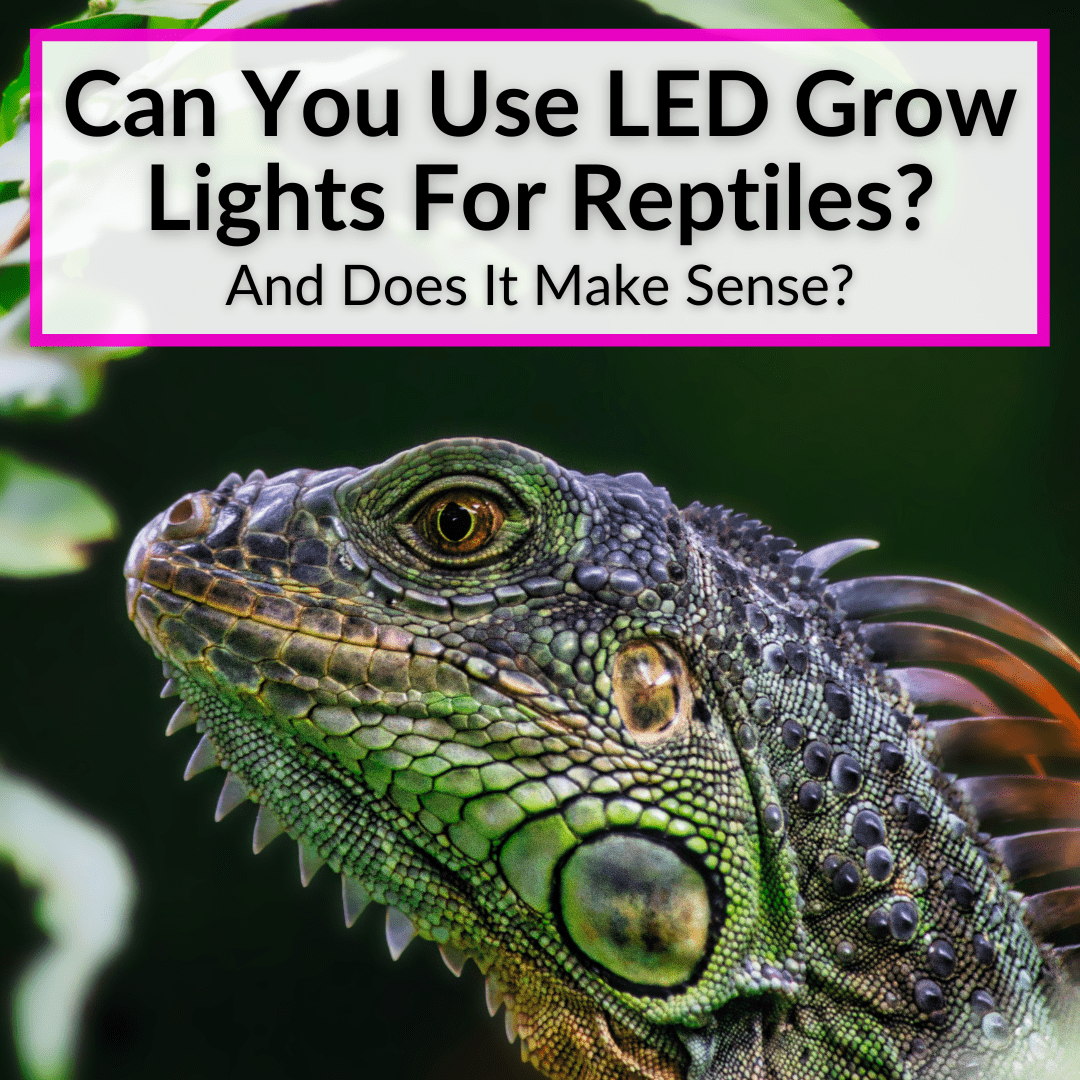 LED grow lights are designed to grow plants.
LED grow lights are designed to grow plants.
They basically take over the role the sun performs in nature.
The sun also lends heat and energy to reptiles. They need its light, its heat, and its ultraviolet radiation to survive.
It makes sense to wonder if LED grow lights could also take over for the sun in this capacity.
Can you use LED grow lights for reptiles, just like you can for plants?
It turns out it’s not quite so simple.
Keep reading to learn to big potential problem with using LED grow lights in this capacity.
Contents
- 1 Can You Use LED Grow Lights For Reptiles?
- 2 Can You Use LED Lights For Bearded Dragons?
- 3 Are LED Grow Lights Safe For Reptiles?
- 4 Can You Use Grow Lights For Reptiles: Final Thoughts
Can You Use LED Grow Lights For Reptiles?
Yes, you can use LED grow lights for your reptile. But you need to make sure you choose a light that provides the type and amount of light your reptile needs. And that can sometimes be a problem.
We will get into that below. But first, it makes sense to examine if it is even worth it to use an LED grow light as a reptile light.
Is it a better choice than traditional types of lighting for reptiles, like fluorescent or incandescent bulbs? Let’s compare the regular reptile lights with LED grow lights.
LED Grow Lights Vs Traditional Reptile Lighting
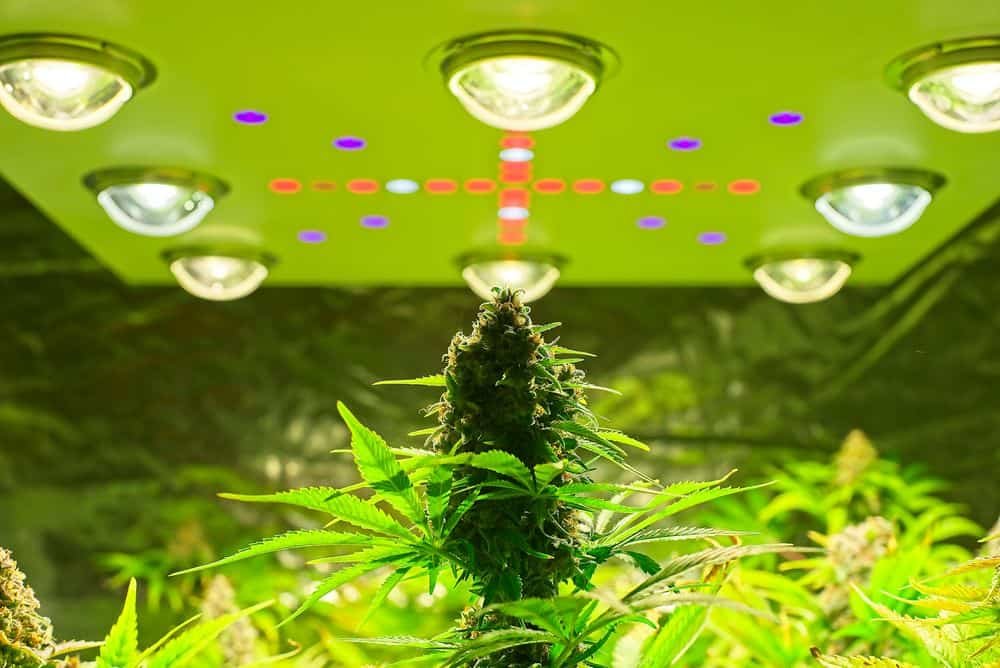
LED grow lights have certain advantages over traditional reptile lights, but they also have some key drawbacks. The result is that there is no clear “best choice”. It will depend on your needs and the needs of your reptile species.
To help you figure out which type of lighting is best for you, it is important to understand the differences between LED grow lights and traditional reptile lighting. Let’s compare them across several categories to help you make an informed decision.
Cost
LED grow lights cost more to buy than traditional reptile lighting. However, they are more energy-efficient and have a longer lifespan, which can save you money in the long run. Traditional reptile lighting may have a lower initial cost, but they require more frequent replacement and usually cost more to run.
Light Spectrum
LED grow lights can have every possible light spectrum. That is one of their advantages. However, UVB LED diodes are expensive and thus extremely rare. Many fixtures have UVA diodes, but virtually none have UVB diodes.
The few LED grow lights that include UVB in their spectrum do so by using supplemental fluorescent bulbs, not LED.
Since most reptiles need both UVB and UVA, it can be difficult to find an LED grow light that provides the necessary UV light for reptiles. Reptile bulbs, on the other hand, have the ideal spectrum reptiles need, which usually means the specifically emit both types of UV radiation.
The UVB is important, because reptiles need it to synthesize vitamin D3. This is crucial for a reptile’s health, because it helps in calcium metabolism and contributes to their overall well-being. And only UVB grow lights can provide vitamin D.
What all of this means is that you will probably need an additional UVB bulb of some kind, if you choose to use LED grow lights to light your reptile tank.
Heat Production
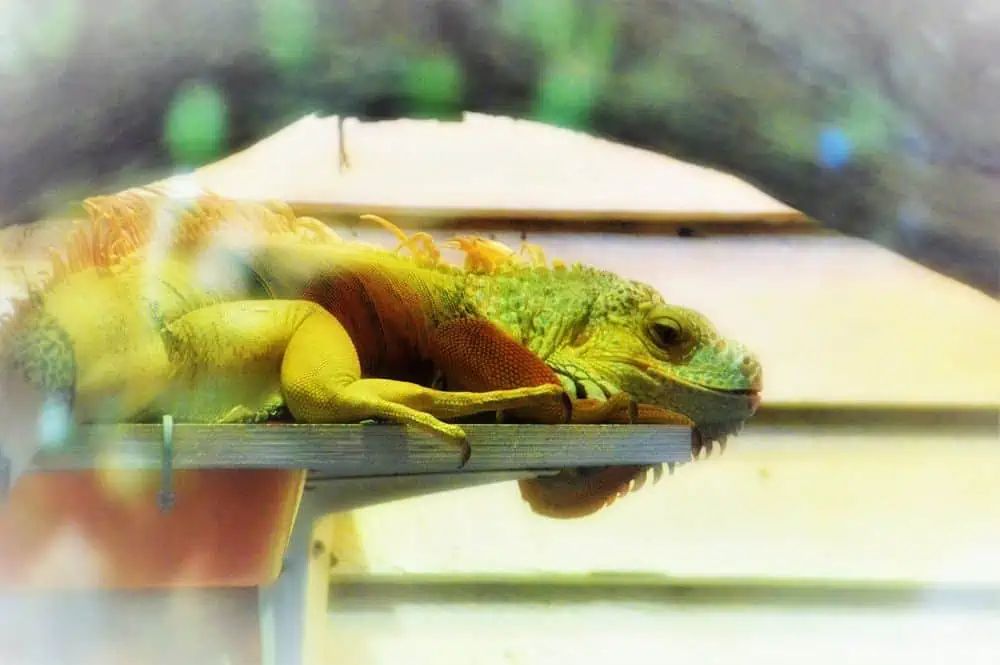
LED grow lights produce less heat than traditional reptile lighting. That’s good for heat-sensitive species, like bearded dragons. But some reptile species require higher temperatures, so traditional reptile lighting may be a better option. It can help provide additional heat.
Efficiency
LED grow lights are more efficient than other types of lighting, meaning they give you more output per watt consumed. The result is a lower electric bill for you in order to achieve the same output.
Lifespan
LED grow lights have a much longer lifespan than traditional reptile lighting, which can save you money in the long run. You will need to replace traditional reptile bulbs more frequently. The costs of new bulbs adds up over time.
Benefits Of Using LED Grow Lights For Reptiles
As you can see, using LED grow lights for your reptiles has several advantages. Let’s take a closer look at the main advantages of LED grow lights for reptiles.
Energy Efficiency
The biggest benefit of LED lighting in general is its efficiency. They they consume less power to produce the same output. This is not only good for your wallet, but also for the environment.
Lower Heat Output
LED lights also generate less heat for the same output. The value of this in a grow tent is obvious. For reptiles it can go either way. If you need to heat your tank anyway, a bulb that emits more heat is advantageous. If your tank is too hot, a cooler-running bulb is better.
Long Lifespan
LED lights last far longer than any other types of lighting, even fluorescent bulbs, which already last much, longer than incandescent ones. Again, far fewer bulb changes benefit your wallet just as much as the environment.
Drawbacks Of LED Grow Lights For Reptiles
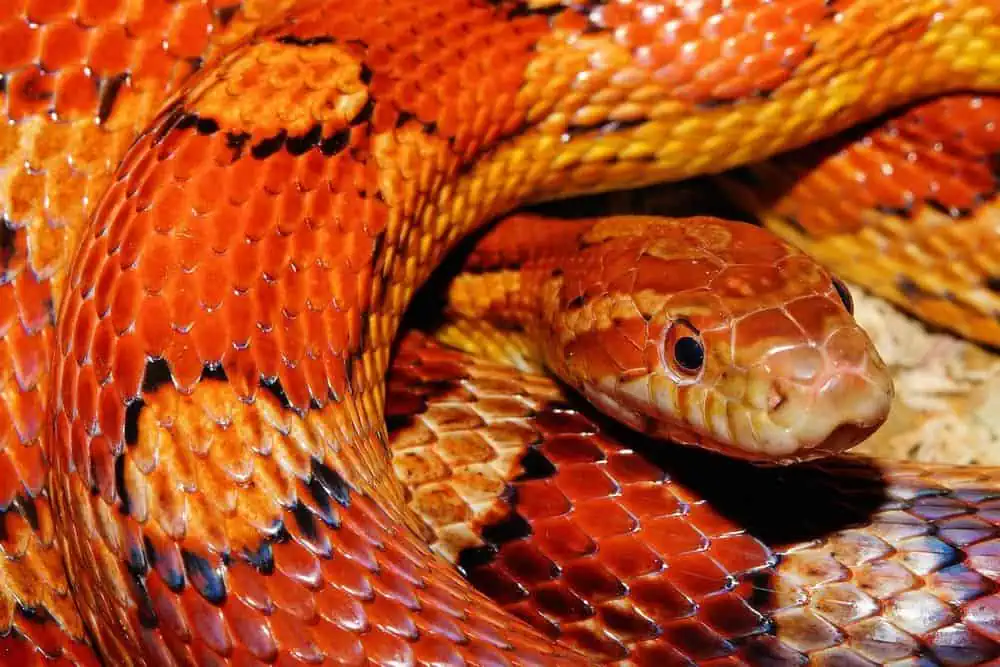
While LED grow lights have some definite advantages, they also have some disadvantages compared to fluorescent or incandescent lighting. For many, the drawbacks will mean you’ll actually be better of with traditional reptile lights.
Spectrum
Yes, LED lights can have any spectrum the manufacturer wants to give them. But LED grow lights are designed to grow plants. For that reason, they do not emit much, if any, UV light.
There is some debate about the value of UVA and UVB light for cannabis plants, with the general consensus saying that some UV light toward the end of flowering can help boost the quality of buds your plants produce.
As a result, many newer LED grow lights do have some UV diodes. But it is always UVA, because UVB diodes are very expensive. And there are very few UVA diodes.
Reptiles generally need larger amounts of UVA. And they also need UVB. The few grow lights that give you UVB light actually do so by attaching a fluorescent bulb to their LED fixtures, so you are basically using fluorescent light after all. You lose all of the advantages of LED.
If your reptile does not need UVB light and only needs a little bit of UVA, an LED grow light can make sense. It also makes sense if you find one that emits a lot of UV light (there are some fixtures that specialize in UV).
Otherwise, you can definitely still use an LED grow light, but you will need to supplement with a UVB bulb of some type, most likely fluorescent. In some cases, this combination will still be more efficient and save you money over using a traditional reptile bulb. But not always.
Power
Many LED grow lights are quite powerful. To use them for reptiles, you’d need to hang them high above the tank or dim them way down (assuming the light is even dimmable). Or you have t make sure to get a fixture with a lower output.
Cost
LED grow lights cost more to buy than other types of light. However, they cost less to run and will probably end up saving you some money in the long run, so this category is a bit of a wash. But it is important to understand that you will need to spend a lot more money upfront.
Choosing The Right LED Grow Light For Your Reptile
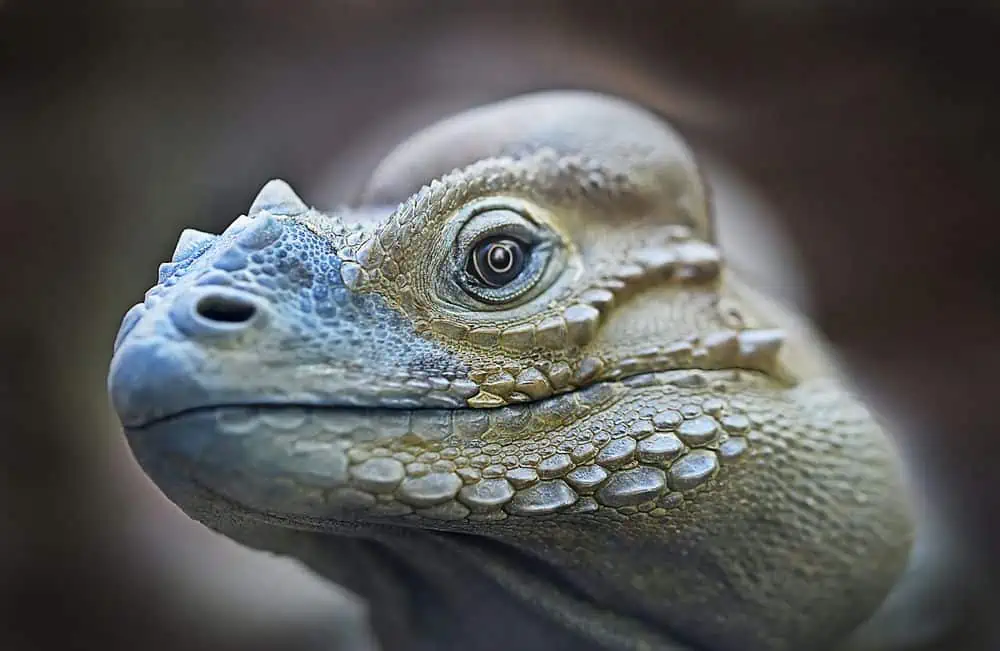
When choosing an LED grow light for your reptile, you need to make sure it actually gives your pet what it needs. Otherwise, you could end up with a useless light. Or worse, one that actually harms your pet. These are the two important characteristics to pay attention to.
Light Spectrum
Reptiles require specific light wavelengths for their growth and overall health. The two crucial types of light for most reptiles are UVA and UVB:
- UVA light: UVA wavelengths play a significant role in reptile behavior, such as feeding and mating
- UVB light: UVB radiation is vital for reptiles, because it helps them metabolize calcium and prevents diseases like metabolic bone disease
If your reptile needs UV light, especially UVB, LED grow lights probably aren’t the way to go, as explained above. But if it just needs a light spectrum that favorably compares to natural sunlight, minus the UVB, then you can find plenty of good LED grow lights that give you that.
Heat Output
Reptiles rely on external heat sources to regulate their body temperature. LED grow lights produce less heat than other types of light, but more powerful ones can still produce too much for a reptile.
It is important to make sure the light you use is not cooking your reptile. On the other hand, your pet may need more heat than the light is providing, so you might need to get an additional heat lamp or heating pad.
Keep these pointers in mind when evaluating the heat output of your LED grow light:
- Understand your reptile’s temperature preference and set up appropriate basking and cool-down areas within their enclosure. If you choose a light that emits the right level of heat, it can double as the basking spot.
- Use a thermostat to maintain consistent heat levels, if possible. With lights, this is not usually possible, so you will need to monitor the temperature regularly.
- Provide a hiding place for your reptile to retreat to, if it needs a break from the light. It is best to provide at least two hiding spots, one in the warmer part of the tank and one in the cooler part.
Other Lighting Options For Reptiles
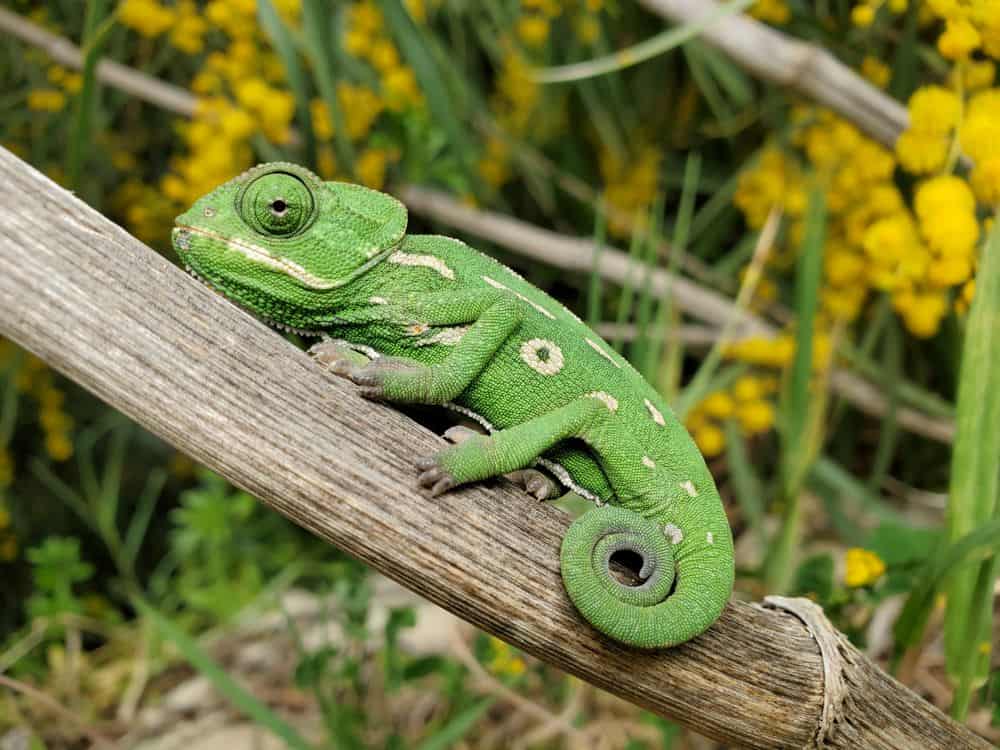
As mentioned, LED grow lights are not going to be the best option in many cases, especially if you have a reptile that needs UV-B light. In that case, you’ll be better off going with one of the other lighting options.
Fluorescent Tube Lights
Fluorescent tube lights are probably the most popular for reptile enclosures. They come in various sizes, wattages and spectra (two of the most common are T8 and T5 tubes).
That means you can get exactly the light your reptile needs. The main drawback is that they do not last quite as long as LED lights and the are not as efficient.
Compact Fluorescent Lights (CFLs)
These spiral-shaped fluorescent bulbs are another option for reptile enclosures. They are very similar to fluorescent tubes, with the only real difference being the form factor.
Since CFL bulbs are more compact (hence the name), they can be more flexible, in terms of where and how you install them. Apart from that, everything said above about fluorescent tubes applies here as well.
Mercury Vapor Bulbs (MVBs)
MVBs are powerful lights that emit both heat and UVB for your reptiles. They are efficient and they provide the necessary light and heat for basking areas. But they do emit an intense heat, so you need to be careful that they are far enough away to ensure they can not cause burns.
Incandescent Bulbs
Incandescent bulbs are the least energy-efficient option, but you can still use them to heat reptile enclosures. These bulbs emit a lot of heat, so it is always best to use them with a thermostat to prevent overheating. The big drawback is that they do not provide any UVB, so you will probably still need a separate UVB light.
Can You Use LED Lights For Bearded Dragons?
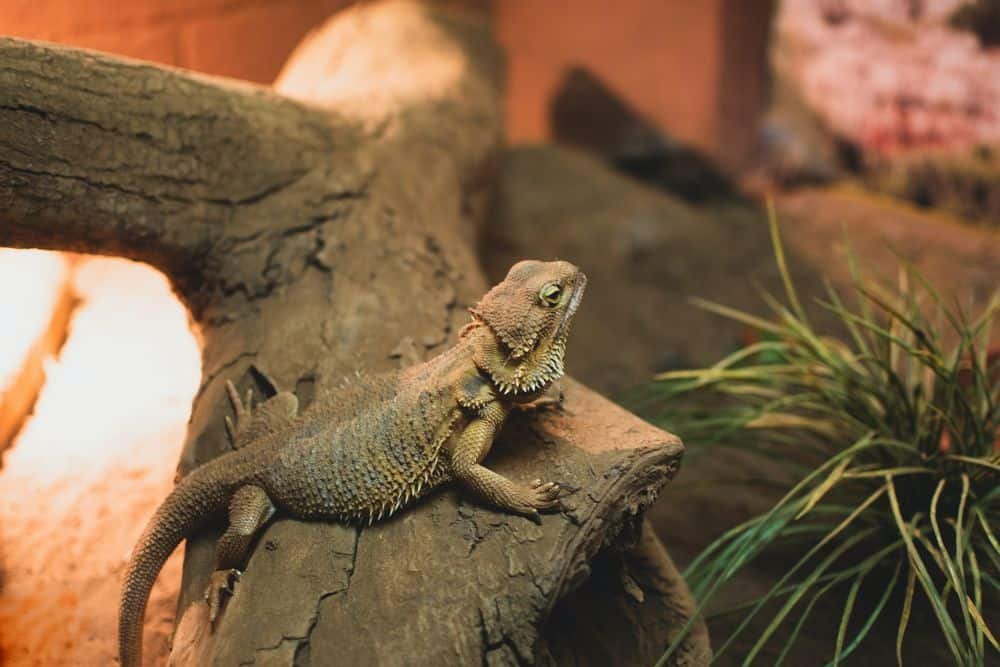
You can use LED lights as secondary lights for bearded dragons, but not as the primary light source. Bearded dragons need UVB light. As already mentioned, LED lights do not emit UVB. IF you want to use an LED light for your bearded dragon, you will also need o get an additional UVB bulb.
Are LED Grow Lights Safe For Reptiles?
LED grow lights are perfectly safe for reptiles, if you use them properly. You need to make sure the light in question does not emit too much heat for your pet, and place it at a safe distance if it does.
You should also make sure it has a light spectrum that works for reptiles, which usually means as close to sunlight as possible. And again, for most reptiles you will need to also add a UVB bulb.
Are LED grow lights safe for pets in general? Yes, but if you get one that emits a lot of UVB, that can actually make it dangerous for pets that are not reptiles, if they spend too much time underneath it.
Can You Use Grow Lights For Reptiles: Final Thoughts
You can use LED grow lights for your reptiles, provided you use them correctly. Their energy-efficient and long-lasting nature makes them a good choice, but their lack of UVB will be a problem for most reptile species. You will need to supplement with an additional UVB bulb.
Be mindful of the heat output of any light you use for your reptile. You want to make sure your pet is getting enough heat to maintain its body temperature, but not so much that is gets burned. Always provide a cooler area and hiding places in the tank, where it can escape the light and heat, if it needs to cool down.
Otto says
Grazie